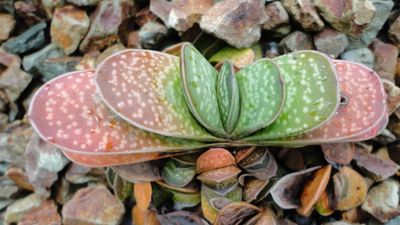Gasteria Information
Gasteria succulent plants are often small and compact, just the right size for container growth. Some are excellent additions to the xeric garden. Textured leaves on these plants vary, but most are rough to the touch. They are flattened, stiff, and thick on many species and lead to common names, such as lawyer’s tongue, ox tongue, and cow tongue. Many varieties have warts; some are black while some are pastel colors. Gasteria information says the plants flower in spring, with blossoms shaped similarily to the stomach, hence the name of Gasteria (“gaster” meaning stomach). Gasteria blooms are similar to those of Haworthia and Aloe. This is one of the succulents that propagate by shooting out babies, resulting in significant clusters if allowed to continue. Remove offsets with a sharp knife when your container gets too full or just to grow more plants. Propagate from leaves or start from seeds.
How to Care for Gasteria
Gasteria is considered a long-lived plant. Care for these plants may differ slightly depending on where they’re grown – indoors or outside.
Growing Gasteria Succulents Indoors
When growing Gasteria succulents indoors, the light from a sunny window is often enough to keep them happy. Indoor growers say they’ve experienced excellent results when growing Gasteria succulents in cool rooms with limited sunlight. Gasteria information advises bright but not direct light for this plant. Growing Gasteria succulents need little water. Fertilizer should be limited to once in spring, both for houseplants and those planted outdoors. You can allow houseplant Gasteria to spend time outdoors in lightly shaded areas for summer, if desired.
Outdoor Gasteria Care
Some Gasteria make excellent additions to the outdoor garden in areas without frost or freeze. Outdoor Gasteria plant care requires afternoon shade and possibly an all-day dappled sun area, depending on the climate. Gasteria glomerata and Gasteria bicolor may grow outdoors in the ground in some areas. As with all outdoor succulent plants, plant them in a quick-draining soil mixture to prevent root rot. Some growers recommend pure pumice. Growing this plant outside in areas with excess rain or humidity might take a few more steps for successful growth. Consider overhead protection from rain or planting on a slope. Don’t water these xerophytic perennials in addition to rain, especially in summer, and keep an eye on the plants to determine if humidity provides enough moisture. Gasteria is not regularly bothered by pests but is one of those succulents that can turn into mush if water is allowed to linger on the leaves.
